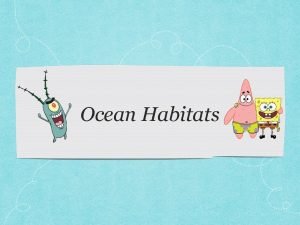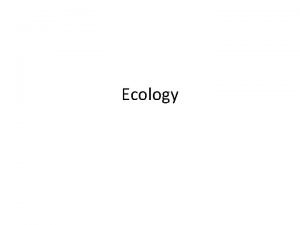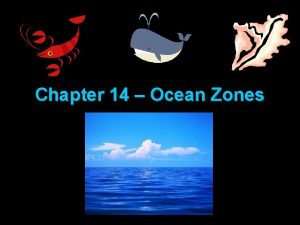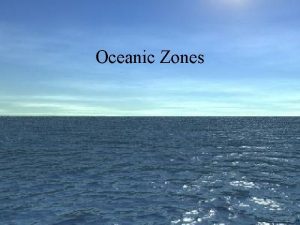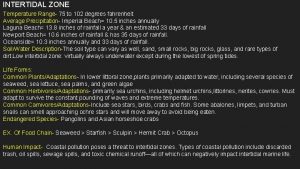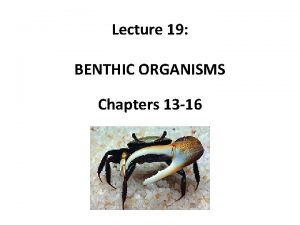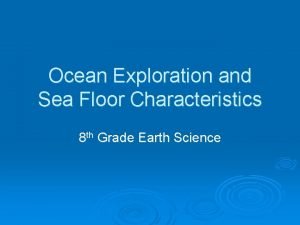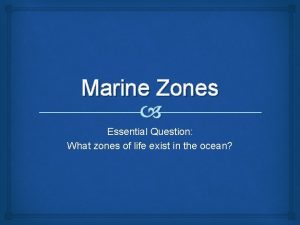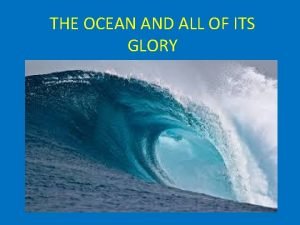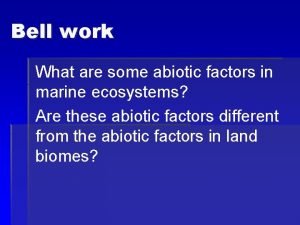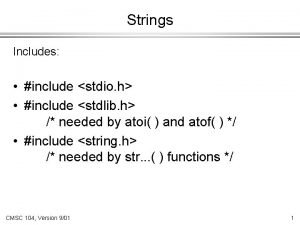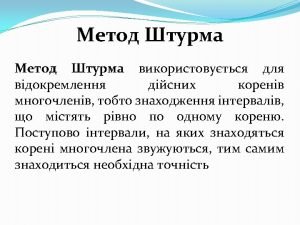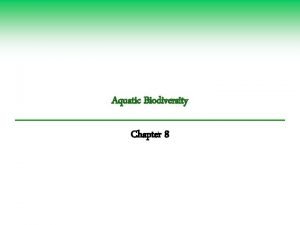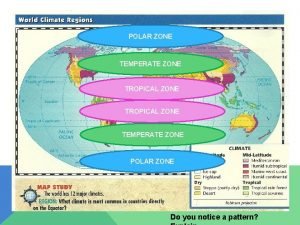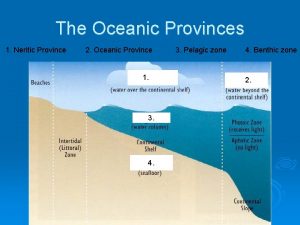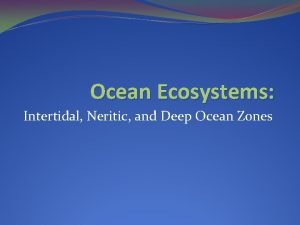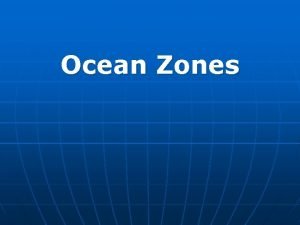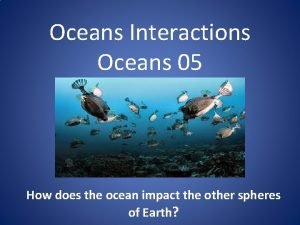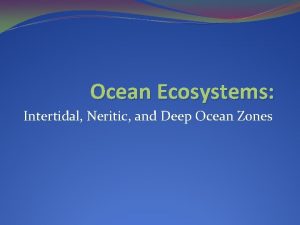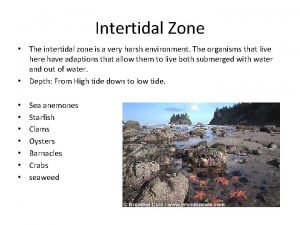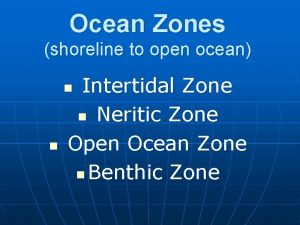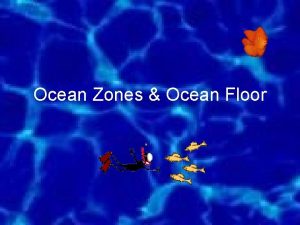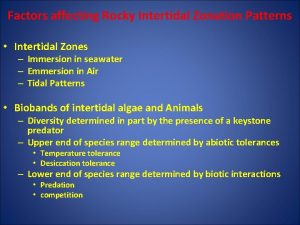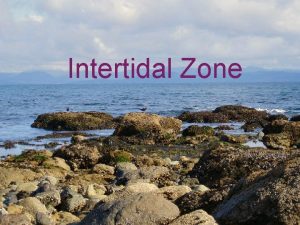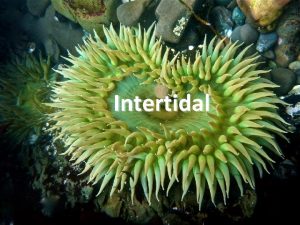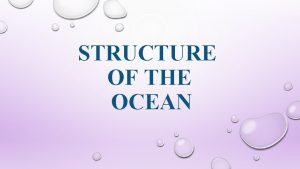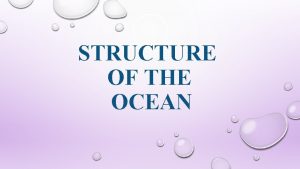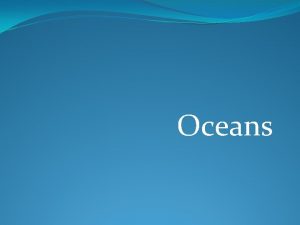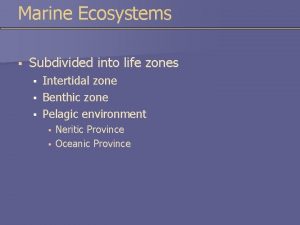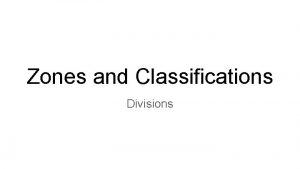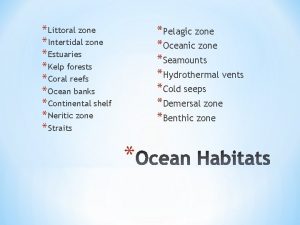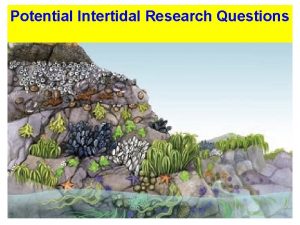Ocean Zones Ocean Zones Include Intertidal zone neritic






















- Slides: 22

Ocean Zones

Ocean Zones � Include Intertidal zone, neritic zone, and the open ocean zone.

Intertidal Zone � Highest tide on land is where it begins. � From there the zone stretches out to the point on the continental shelf exposed by the lowest tide.

Neritic Zone � Extents from the low tide line out to the edge of the continental shelf

Open Ocean Zone � Beyond the continental shelf lies open ocean zone. � Zone is the deepest, darkest part of the ocean.

Organisms � Most live near the surface � Scientists classify marine organisms according to where they live and how they move

Plankton � Are tiny algae and animals that float in the water and are carried by waves and currents. � Include geometrically shaped diatoms

Nekton � Free swimming animals that can move throughout the water column � Squid, most fishes, and marine mammals such as whales and seals.

Benthos � Are organisms that inhabit the ocean floor. � Crab, sea stars, octopus and lobsters are examples.

Intertidal zone � Organisms that live in the rocky intertidal zone must be able to tolerate the pounding of waves, salinity, and temp � Must also withstand periods of being underwater and exposed to air.

Estuary � An environment along the oceans edge � Is a coastal inlet or bay where fresh water from a river mixes with salty ocean water. � Water is known as brackish.

Coastal Wetlands � Are habitats found in and around estuaries � Along the US coasts, most wetlands are either mangrove forests or salt marshes.

Salt Marshes � Have muddy soil that is rich in nutrients and dominant plant is cordgrass � Tide channels running through the grass break up waves, thus protecting organism from the ocean surf

Mangroves � Have arching prop roots that anchor the trees to the land � Roots break up wind and waves protecting organism that live there � Roots also trap sediment so water is rich in nutrients

Neritic Zone � Extends from low tide out to the edge of the continental shelf � Hallow water over the continental shelf receives sunlight and a steady supply of nutrients washed from the land into the ocean

Habitats in Neritic Zone � Are coral reefs and kelp forests

Coral Reefs � Can from only in shallow tropical ocean waters � Produce a hard material around their soft bodies � When they die hard materials is left behind

Kelp Forests � Grow in cold neritic waters where the ocean has a rocky floor

Open Ocean � Begins where the nertic zone ends, at the end of the continental shelf � Only a small part of the open ocean receives sunlight � Has fewer nutrients.

Surface Zone � Surface zone is the only part of the open ocean that receives enough sunlight to support algae � Microscopic organisms are the base of food webs in the open ocean

Deep Ocean � Dark and cold � Many deep sea fishes produce their own light called bioluminescence.

Hydrothermal Vent � Located in the deep zone � Is an area in which heated ocean water rises through the cracks of ocean floor � Chemical nutrients in the heated water support unique organisms.
 Intertidal ocean zone
Intertidal ocean zone Foundation species examples
Foundation species examples Neritic zone
Neritic zone Animals that live in the abyssopelagic zone
Animals that live in the abyssopelagic zone Intertidal zone precipitation
Intertidal zone precipitation Intertidal zone
Intertidal zone Neritic zone
Neritic zone Neritic zone
Neritic zone Facts about the neritic zone
Facts about the neritic zone Neritic zone biotic life
Neritic zone biotic life #include stdio.h #include stdlib.h #include string.h
#include stdio.h #include stdlib.h #include string.h #include stdio.h #include conio.h #include stdlib.h
#include stdio.h #include conio.h #include stdlib.h Source zone transition zone and floodplain zone
Source zone transition zone and floodplain zone Polar tropical
Polar tropical How do littoral zones differ from riparian zones?
How do littoral zones differ from riparian zones? Weather and climate crash course
Weather and climate crash course Neritic province and oceanic province
Neritic province and oceanic province Neritic ecosystem
Neritic ecosystem Jeopardy zones of regulation
Jeopardy zones of regulation Ocean zones graphic organizer
Ocean zones graphic organizer Youtube youtube youtube
Youtube youtube youtube
